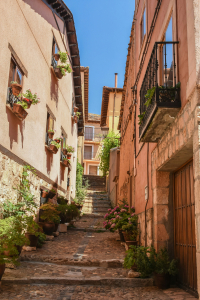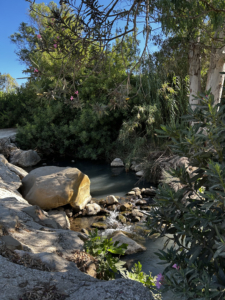
Manilva Pueblo | Area Guide
Manilva Pueblo, set about 2–3 km inland, sits atop gently rolling hills blanketed in vineyards and olive groves, offering sweeping views of the Mediterranean and the surrounding mountain range of Sierra Bermeja. Its starkly white homes contrast beautifully against green Andalusian landscapes—perfect for strolling and soaking in local charm.

This picturesque whitewashed village is a charming blend of history, tradition and natural beauty. Its narrow, flower-lined streets and Andalusian architecture give it a timeless, authentic atmosphere.
Food and wine are central to local life, with the area famed for its Muscatel wines, celebrated at the annual grape harvest festival, and its cuisine showcasing fresh seafood and traditional Andalusian dishes. Close by, the coastal town of Sabinillas, the marina at Puerto de la Duquesa and the fishing enclave of El Castillo provide further options for dining, shopping and seaside relaxation. Highlights include:
-
Traditional village ambiance: Wander through narrow, flower-lined streets and experience authentic Andalusian architecture and warmth.
-
Food & drink: The region is known for fresh seafood and local muscatel wines.
-
Wine culture: Explore the local wine scene at places like the Wine Museum of Manilva (CIVIMA) and Bodega Nilva, both specialising in Muscatel wine.

The village itself is steeped in heritage, with highlights such as the Iglesia de Santa Ana, dating back to the 18th century, and nearby sites like the Castillo de la Duquesa, built over Roman ruins and now home to an archaeological museum, as well as the prehistoric settlement of Los Castillejos de Alcorrín and the coastal Torre de la Chullera:
-
Castillo de la Duquesa & Archaeological Museum: This 18th-century fortress sits atop an ancient Roman villa and now houses a municipal archaeology museum displaying artifacts from the 1st to 5th centuries
-
Los Castillejos de Alcorrín: A prehistoric fortified settlement dating back to the 9th century BC, showing Phoenician influences
-
Iglesia de Santa Ana: Built between 1776–1783 over a 16th-century precursor, this church is a cultural and religious focal point, hosting a lively festival on July 26
-
Torre de la Chullera: A circular coastal watchtower (around 10 m tall), historically used for surveillance and declared a site of cultural interest

Beyond its cultural landmarks, Manilva is rich in natural attractions: the sulphurous waters of the Baños de la Hedionda, said to have been used by Julius Caesar, and the Charco de la Mina river pool offer refreshing escapes, while the surrounding beaches range from family-friendly stretches in Sabinillas and La Duquesa to the wilder coves of Punta Chullera.
What makes Manilva Pueblo special is its ability to combine authentic village charm, deep-rooted history and a slower pace of life with easy access to beaches, natural wonders and festive spirit, making it one of the Costa del Sol’s most appealing yet understated destinations.
Take a stroll through Manilva here & view properties on the market in this area here.

